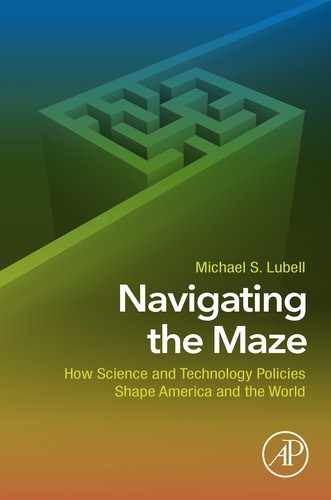Preface
Science, and the technologies it has spawned, have been the principal drivers of the American economy since the end of post World War II. Today, economists estimate that a whopping 85% of the U.S. gross domestic product (GDP) growth traces its origin to science and technology. The size of the impact should not be a surprise, considering the ubiquity of modern technologies.
Innovation has brought us the consumer products we take for granted: smart phones and tablets, CD and DVD players, cars that are loaded with electronics and GPS navigating tools and that rarely break down, search engines such as Google and Yahoo, the Internet, LED lights, microwave ovens, and much more. Technology has also made our military stronger and kept our nation safer. It has made food more affordable and plentiful. It has provided medical diagnostics such as MRIs, CT scanners, and genomic tests; treatments for disease, such as antibiotics, chemotherapy, immunotherapy and radiation; minimally-invasive procedures, such as laparoscopy, coronary stent insertion, and video-assisted thoracoscopy; and artificial joint and heart valve replacements.
None of those technological developments were birthed miraculously. They owe a significant part of their realization to public and private strategies and public and private investments. Collectively, the strategies and investments form the kernel of science and technology policy.
Navigating the Maze: How Science and Technology Policies Shape America and the World serves as a guide for students, scientists, engineers, technologists, entrepreneurs, business leaders, and members of the general public who want to understand the fundamentals of science and technology policymaking and how to use them to achieve beneficial outcomes. Larely using a historical narrative, the book provides unique insights into the integral nature of science, science policy, and politics, and the complex terrain on which they co-exist.
The Preamble and Introduction set the stage for the historical narrrative that follows. Part One provides a comprehensive look at the development of science and technology from 1787 to 1992, illustrating the principles of a subject that dates to the very birth of America. Part Two, which carries the narrative from 1992 until the present, focuses on concerns that are central to almost every facet of modern American life. Framed by the opportunities and challenges of globalization and the rapid pace of technological change, Part Two examines the tensions in present-day policymaking.
